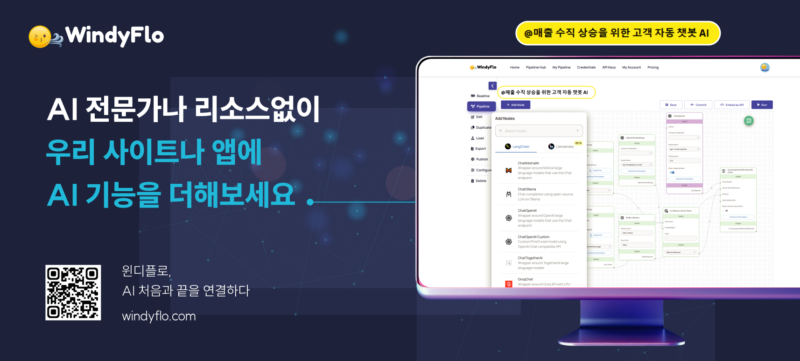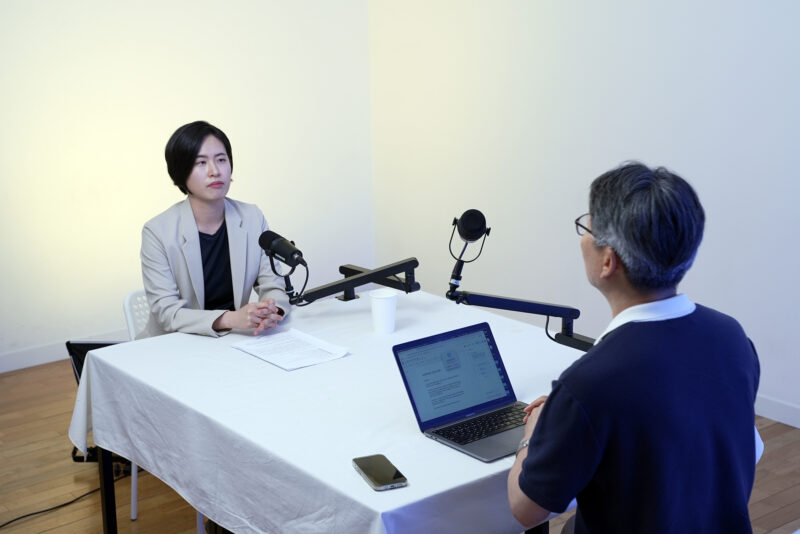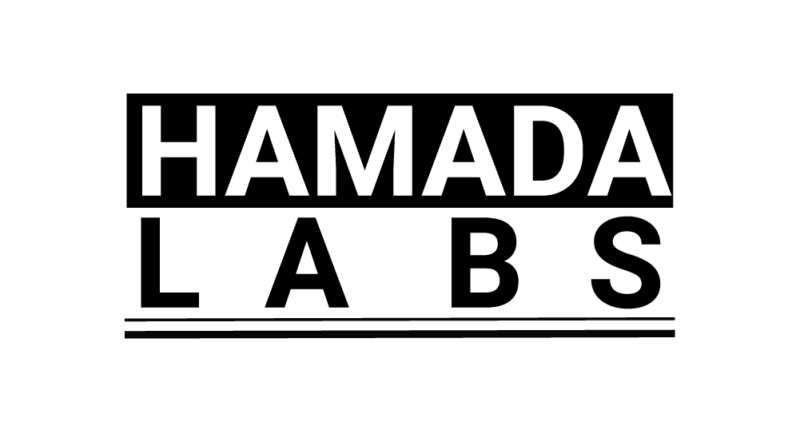With the explosive growth of generative AI, the corporate AI adoption boom is intensifying. Just two years after ChatGPT’s launch, over 80% of companies worldwide are considering AI adoption, and the global LLM (Large Language Model) market is projected to reach $5.7B USD (8 trillion KRW) in 2025. However, the biggest obstacle companies face alongside this market expansion is the ‘shortage of AI specialists.’ Korean AI startup HamadaLabs emerged to fill this market gap.
WindyFlo, developed by HamadaLabs, is a next-generation LLMOps (Large Language Model Operations) platform. While traditional AI development required complex hard coding spanning dozens or hundreds of pages, WindyFlo enables building AI pipelines through drag-and-drop methods via a visual interface. The company was founded in November 2023 by CEO Bang Seung-ae, who holds a doctorate in engineering and arts convergence, together with CTO Lee Deuk-ki, a 9-year AI developer who won the Presidential Award for Invention. The two are married.
CEO Bang emphasizes, “The AI era has arrived, but companies still struggle with how to integrate AI into their work. WindyFlo is a solution that allows you to assemble and deploy AI ‘like LEGO blocks.’” Just as personal computers initially used text-based DOS operating systems before transitioning to Mac OS or Windows for intuitive use, WindyFlo is attempting visual and intuitive innovation in AI development.
Since launch, WindyFlo has secured 20,000 visitors from 20 countries, proving its competitiveness in the global market. Notably, 2,000 people—10% of total visitors—are actually using the service, showing higher user conversion rates compared to typical SaaS platforms.

WindyFlo’s competitiveness goes beyond being a simple no-code tool—it’s an engineering platform that integrates complex technologies including real-time collaboration, automation, and industry-specific customization. HamadaLabs cites as key differentiators: ▲canvas-based interface enabling real-time collaboration across job functions ▲AI orchestration features that analyze user requirements and automatically generate workflows ▲industry-specific templates for finance, education, and content. The structure enabling team-based AI building is particularly crucial for realizing the paradigm shift from MLOps to LLMOps.
WindyFlo’s value is also evident in the enterprise market. To date, the company has signed AI development service contracts with 5 startups, completed PoC (Proof of Concept) with 2 public companies, and is discussing internal deployment with 1 public company. The company has also established a foothold for overseas expansion by completing MOUs and sales contracts with 2 Japanese companies.
The intellectual property portfolio is solid, with 2 domestic patents, 2 international PCT applications, and 2 Japanese patent applications filed, securing IP rights for core technologies. This represents important assets supporting technological competitiveness in future global markets. HamadaLabs targets $93M USD (130 billion KRW)—10% of the domestic MLOps market—within 3 years, with long-term plans to expand to $307M USD (430 billion KRW)—10% of the $3.6T USD (5 trillion KRW) global developer-targeted MLOps market.
CEO Bang states, “While corporate demand for AI automation clearly exists, tools to implement it aren’t sufficiently intuitive. We will provide practical utility in industrial settings through proven technology and lead AI democratization.”
HamadaLabs is growing steadily with space and funding support from Pangyo Gyeonggi Culture Creation Hub, operated by Gyeonggi Content Agency’s Southern Regional Center. CEO Bang expressed gratitude, saying the Pangyo Hub has been “tremendously helpful.”
HamadaLabs is seeking seed investment in Q3 2025 to further develop WindyFlo, a platform that eliminates AI technology barriers and enables more people to utilize AI. This experiment may be the first step toward ‘AI democratization’ beyond just development efficiency.

What problem is HamadaLabs trying to solve?
The problem HamadaLabs addresses is ‘AI talent shortage and cost issues within companies.’ While the AI era has arrived, it’s still unclear to companies how to integrate AI into their work. Additionally, deploying personnel for various positions needed for AI development increases development time and costs, creating demand for efficiency.
Development work particularly requires hard coding and programming, with code spanning dozens or hundreds of pages, making it difficult to quickly grasp AI algorithm structures. This naturally prevents collaboration with engineers from other fields and requires hiring personnel for each position.
HamadaLabs developed and operates WindyFlo, a tool for utilizing LLM AI models, aligned with companies’ needs to solve these problems.
How does HamadaLabs solve this problem?
HamadaLabs operates WindyFlo, an engineer tool that makes AI pipeline creation easy and convenient. Companies inquiring about adopting WindyFlo generally want to use it as a tool for existing backend and frontend developers to understand and integrate AI.
Additionally, when developing Agents, prototyping through WindyFlo enables rapid feature implementation without hard programming, allowing even non-expert AI developers to operate desired AI functions and reduce time.

What are HamadaLabs’ products/services, and what is their current progress?
WindyFlo is currently offered as a SaaS service accessible at windyflo.com. We’ve had 20,000 users from 20 countries visit our service, with 10% signing up and using it.
For early startups without AI development knowledge or development teams unfamiliar with pipeline creation, we also offer enterprise contracts where our development team integrates AI into customers’ web or mobile services. We’ve provided AI production services using WindyFlo through contracts with 5 startups.
We’ve also conducted PoCs with 2 public companies and are discussing internal deployment with 1 public company.
What is HamadaLabs’ competitiveness/differentiation compared to competitors?
While there’s a similar competitive service in the US that greatly influenced us, we considered what features they couldn’t provide. We identified corporate needs and incorporated team collaboration features along with more convenient automatic creation and recommendation features, with some R&D ongoing.
While currently a generalized tool, we aim to customize for different industry domains like finance and education, which require different functionalities.

Who are the core target customers, and what is the target market size?
Our 3-year target market (SOM) is the domestic developer MLOps market, targeting $93M USD (130 billion KRW)—10% of the total $1.07B USD (1.5 trillion KRW) MLOps market. Our serviceable addressable market (SAM) is the global developer MLOps market, targeting $307M USD (430 billion KRW)—10% of the total $3.6T USD (5 trillion KRW) market. The total addressable market is the ‘2025 global LLM AI model market’ worth $5.7B USD (8 trillion KRW).
What is HamadaLabs’ business model?
WindyFlo has both B2B and B2C business models. The SaaS version is B2C, offering monthly subscriptions primarily to company employees or solopreneurs—essentially B2C that’s close to B2B.
The B2B enterprise model differs from SaaS subscription payments, proceeding through solution sales or individual contracts.

What achievements has the HamadaLabs team made so far?
We received initial seed investment from angel investors in April this year and continue receiving support. We’re discussing collaborations and contracts with public companies and completed MOUs and sales-related contracts with 2 Japanese companies. We’ve completed 2 domestic patent applications, 2 international PCT applications, and 2 Japanese patent applications.
We’ve contracted with 5 startups to develop AI using WindyFlo.
What is the HamadaLabs team’s competitiveness?
CEO Bang Seung-ae holds a doctorate in engineering and arts convergence and has experience in startup acceleration, venture investment, business operations and management, and overseas projects. She excels at maximizing corporate and individual strengths and creating structures.
The CTO is a co-founder with 9 years of AI development and R&D experience, a Presidential Award for Invention, multiple startup experiences, and AI developer experience in Japan. CEO Bang and the CTO met at an accelerating company, complement each other’s lacking areas, and founded the company while discussing future visions together.

Give three reasons why HamadaLabs should receive investment.
First, HamadaLabs is a company with technical strengths in AI LLM development and multi-agent-based LLMOps, with potential for global market expansion. We possess differentiated technology-based solutions applicable to work reduction and automation across various job functions within companies.
Second, we can expand markets globally through technical differentiation between platform SaaS and enterprise on-premise models while stably securing the early market in the B2B domain of LLM AI models for developers and companies.
Third, as corporate demand for work automation through AI adoption increases, it’s time to supply customized solutions meeting corporate requirements. We can grow rapidly through verified solution supply by collaborating with public companies targeting the global market.
What support has HamadaLabs received from Pangyo Gyeonggi Culture Creation Hub?
We moved into Pangyo Hub in November 2024 and commute there. There’s an advantage of communicating with many other IT startups in Pangyo, and it’s good for sharing startup-related business information.
MORE FROM THE POST
- [Korean Startup Interview] StudioMetaK: Leading the Content Industry with AI Video and Virtual Human Technology
- [Korean Startup Interview] EHAN Creative: Leading Educational Innovation in the Digital Textbook Era with Generative AI ‘Duwing’
- [Korean Startup Interview] KOIVIS: “Targeting Global Market with Automatic Playlist Replication and Migration”
- [Korean Startup Interview] Invigo Works: Providing ‘Virtual CFO’ SaaS Solutions for SME Manufacturers
- [Korean Startup Interview] f862: Bridging Film and AI to Unlock Hidden Video Content



Leave a Reply